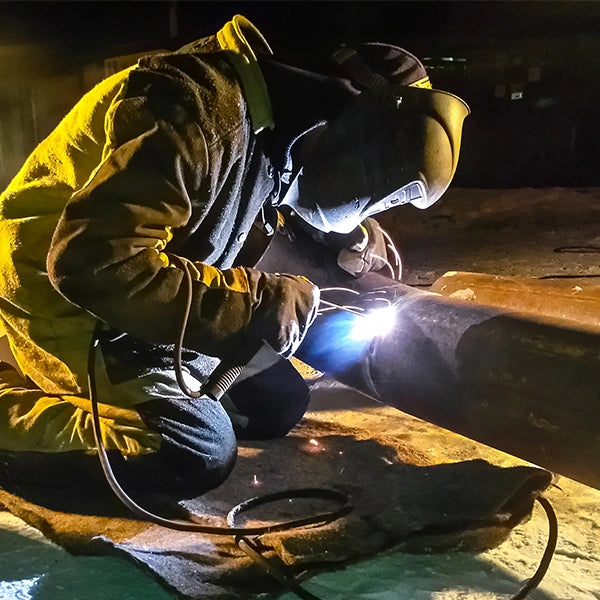Welding WPS: Usual Blunders to Avoid and How to Correct Them
Welding WPS: Usual Blunders to Avoid and How to Correct Them
Blog Article
The Ultimate Guide to Welding WPS Procedures: A Thorough Overview for Welders
In the intricate world of welding, Welding Procedure Specifications (WPS) function as the backbone of making sure top quality, uniformity, and safety in welding procedures. Comprehending the subtleties of producing, executing, and monitoring WPS procedures is essential for welders aiming to boost their craft and fulfill market requirements. As we delve right into the different components of a WPS and explore the intricacies of credentials and certification, we will reveal the vital role these procedures play in the realm of welding. Let's start a journey to decipher the complexities and relevance of WPS treatments in welding practices.
Significance of WPS Procedures
Comprehending the relevance of Welding Procedure Requirements (WPS) procedures is vital for ensuring the top quality and stability of bonded structures. WPS treatments function as a roadmap for welders, describing the needed actions, parameters, and products required to attain a sound weld. By sticking to WPS standards, welders can guarantee uniformity in their work, causing structurally audio and trusted welds.
Among the main reasons WPS treatments are essential is their duty in keeping weld top quality and integrity. Following the defined welding specifications and strategies described in the WPS aids avoid defects such as porosity, breaking, or insufficient blend, which can endanger the strength and resilience of the weld. Additionally, WPS treatments are crucial for ensuring conformity with market standards and codes. By adhering to well established WPS guidelines, welders can show that their job satisfies the needed needs for security and top quality, providing assurance to customers, inspectors, and governing bodies. Basically, the importance of WPS procedures can not be overstated, as they are fundamental to attaining regular, high-grade welds that fulfill sector standards and specs.

Parts of a WPS
A Welding Treatment Requirements (WPS) commonly makes up vital elements that detail the details needs for carrying out a weld, guaranteeing uniformity and high quality in the welding process. The essential components of a WPS consist of vital variables such as base steels, filler metals, interpass and preheat temperature levels, welding procedures, securing gases, welding positions, and post-weld warmth therapy requirements.
Base steels refer to the materials being signed up with, while filler steels are used to fill up the space in between the base metals during welding. The welding procedure describes the certain method to be used, whether it's gas metal arc welding (GMAW), secured metal arc welding (SMAW), or an additional technique. Welding placements define the alignments in which welding can be done.

Qualification and Certification
Having established the essential components of a Welding Procedure Spec (WPS), the focus currently changes in the direction of the crucial elements of qualification and accreditation in welding practices.

Certification, on the other hand, is the official acknowledgment of a welder's credentials by an appropriate qualification body or organization. Welding qualifications their explanation are generally based on the details welding processes, materials, and placements a welder is certified to deal with. Holding a legitimate welding qualification demonstrates that a welder fulfills market standards and is qualified to carry out welding tasks to the called for specifications.
Developing a WPS
To establish a Welding Treatment Requirements (WPS) that fulfills market requirements, cautious consideration of welding procedures, materials, and operational parameters is essential. The first action in creating a WPS is to recognize the welding process to be utilized, such as gas steel arc welding (GMAW) or protected metal arc welding (SMAW)

Executing and Checking WPS
Upon wrapping up the detailed Welding Procedure Requirements (WPS) that diligently details welding procedures, materials, functional criteria, and quality guarantee actions, the focus moves to effectively applying and checking the recognized from this source procedures. Application entails making sure that all welders associated with the project recognize with the WPS and follow it diligently throughout the welding procedure. This requires giving appropriate training and supervision to guarantee adherence to the defined procedures. Keeping an eye on the WPS entails constant oversight to verify that welding tasks straighten with the recorded specifications. Inspections, screening, and quality assurance actions are essential components of the surveillance process to recognize any deviations or issues promptly. Routine audits and reviews of the welding treatments help in maintaining consistency and quality throughout the task. Efficient application and surveillance of the WPS are essential for making certain the stability, toughness, and safety of the bonded joints, ultimately adding to the overall success of the welding job.
Final Thought
To conclude, understanding and following Welding Procedure Requirements (WPS) is important for welders to guarantee quality, uniformity, and security in their job. By understanding the elements of a WPS, obtaining appropriate certifications and qualifications, creating comprehensive treatments, and applying and checking them successfully, welders can improve their abilities and effectiveness in welding methods. Complying with WPS procedures is vital for creating premium welds and conference sector criteria.
In the complex globe of welding, Welding Procedure Requirements (WPS) serve as the foundation of guaranteeing high quality, consistency, and safety in welding procedures. The welding process details the particular technique to be used, whether it's gas metal arc welding (GMAW), protected metal arc welding (SMAW), or an additional method.To establish a Welding Treatment Requirements (WPS) that satisfies industry standards, cautious consideration of welding procedures, materials, and operational criteria is vital. The first action in developing a WPS is to identify the welding procedure to be utilized, such as gas metal arc welding (GMAW) or protected metal arc welding (SMAW)Upon finalizing the extensive Welding Procedure Specification (WPS) that carefully information welding processes, products, operational criteria, and top quality assurance measures, the emphasis shifts to properly executing and keeping an eye on the well-known treatments.
Report this page